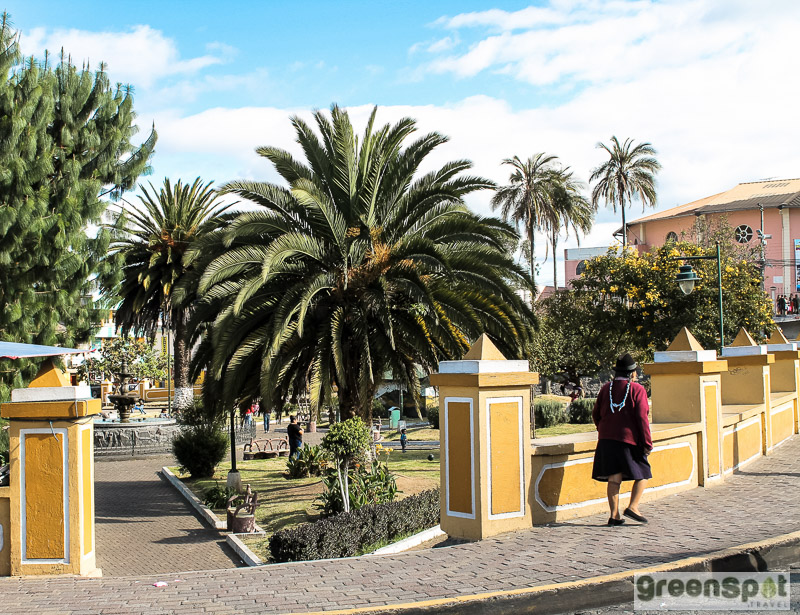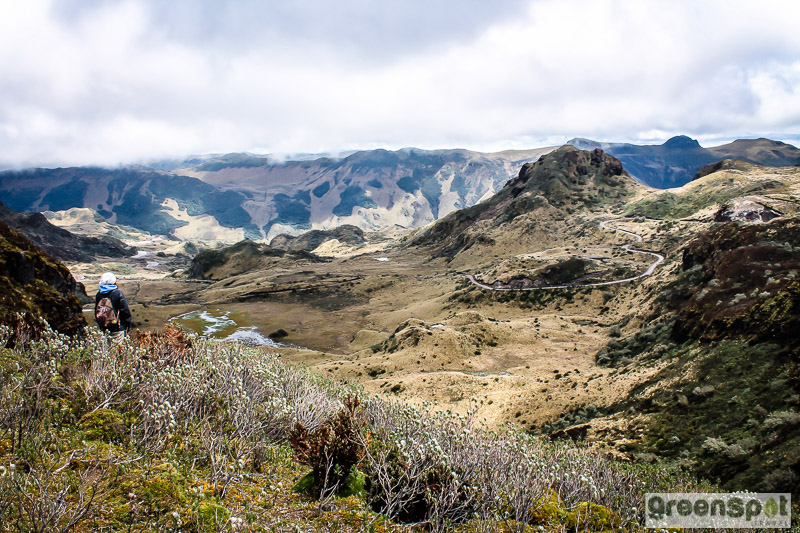Ecuador lies in a privileged location, right in the middle of the world. This allows for mega-biodiversity to exist within a relatively small country. Not only can you travel from the mountains to the jungle in the same day, but you also have the opportunity to be exposed to thousands of species of plants, birds, insects, mammals and other creatures. In fact, the country is often described as a collection of four worlds in one, made up of the coast, Andes Mountains, Amazon Jungle and Galapagos Islands.
Compiled of numerous protected areas, visitors can experience this rich flora and fauna first-hand while enjoying a wide range of activities, from wild adventures like river rafting and mountain biking to peaceful bird watching, horseback riding and cooking classes. For those who delight in wildlife and cultural tradition, a Galapagos cruise combined with a trip to Otovalo Market (South America’s largest!) while staying in a beautiful hacienda in the highlands, might be the perfect combination.
Here is a list of 10 incredible moments you can enjoy on a GreenSpot trip to Ecuador:
Galapagos Islands Cruise
The Galapagos Islands receive an abundance of well-deserved hype, so they pretty much speak for themselves. Even a wildlife novice can’t help but enjoy the close encounters with dancing and whistling Blue Footed Boobies or the opportunity to swim and frolic with penguins and sea lions, all while cruising from island to enchanted island in the comfort of a luxurious vessel.
Horseback Riding in the Andean Highlands
Donning chaps and a poncho, take a ride like a true Ecuadorian chagra through pristine valleys of the Andean Highlands. As Cotopaxi Volcano looms in the distance, you have the chance to walk, trot, or gallop your way across the open terrain, on the outskirts of Cotopaxi National Park.
Downhill Mountain Biking in Cotopaxi National Park
If horseback riding is a bit tame for your wild spirit, you are sure to enjoy a thrilling bike ride through the extraordinary beauty of Cotopaxi National Park. Wild horses and wild flowers surround the rugged trails as you bump your way down the mountain, returning to a cozy hacienda at the end of the ride.
Hike!
There are countless opportunities for hiking on mainland Ecuador and even short hikes throughout the Galapagos Islands. Whether it’s along the craggy foothills of the Andes, through the verdant rainforest, or over volcanic lava rock, we highly recommend packing those hiking boots and meandering along Ecuadorian trails.
Shop at Otavalo Market
Woven textiles, panama hats, jewelry, and ponchos are just a few of the items that might tempt you at this marvelous bazaar of artisan goods. However, it’s the vibrant colors and display of cultural pageantry that you’ll take home and cherish for a lifetime.
Kayak Through the Amazon Jungle
Imagine the jungle sounds that will surround you as your kayak glides through the twisting tributaries of the Amazon. Binoculars around your neck, there is no better way to observe the abundance of wildlife that inundates the rainforest.
Explore Quito’s Historic Plazas
Founded in the 16th century on the ruins of an Inca city, Quito is now a UNESCO World Heritage site. Sitting at a little over 9,000 feet, the air is crisp and skies are blue as can be. Quaint alleyways, pigeon-filled plazas, and ancient architecture are found around every bend, and there is enough to see to fill a few days of wandering.
Visit the Middle of the World
Don’t pass up the opportunity to straddle the equator. It isn’t every day that you have the chance to stand with each foot in a different hemisphere. This is possible at the Middle of the World Monument, not too far from Quito.
Stay in a Beautiful Hacienda
Ecuadorian haciendas frequently date back to the 16th century and have generations of stories to tell. Many are still working farms, and you can soak up the atmosphere and chagras (cowboys) way of life, as you learn about their history and enjoy the surrounding gardens and fertile land.
Get to Know the Locals
As a tour operator with a mission to create meaningful connections with people and communities, we consider this to be a vital part of any travel experience. The hospitality of the Ecuadorian people makes it easy and enjoyable to discover the soul of this country through personal encounters with the local people.
All of this and more can be found in our sample Ecuador itineraries. As always, we can customize your trip to suit your desires. We’d love to talk to you about your Ecuador travel dreams. Contact us to find out how we can help you get there.






















 Â
  RT
RT